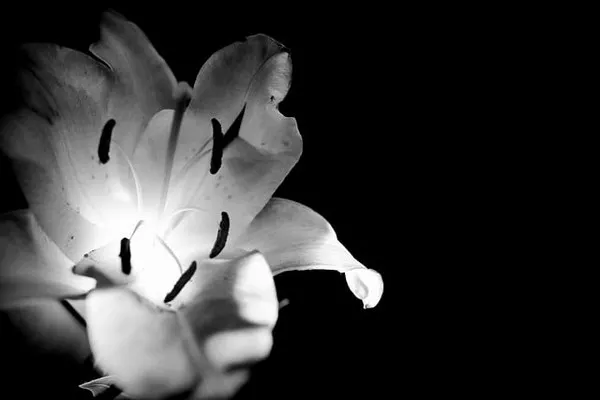Gardening enthusiasts often encounter the challenge of selecting appropriate plants for various conditions, and one of the most common challenges is finding flowers that thrive in shaded areas. While sunlight is crucial for plant growth, there are numerous flowering plants that have adapted to and even flourish in low-light environments. This article delves into the world of shade-loving flowers, offering insights into their characteristics, cultivation tips, and the vibrant beauty they can bring to even the darkest corners of your garden.
Understanding Shade Conditions
Before delving into the types of flowers that thrive in shade, it’s important to understand the different types of shade conditions. Shade can be classified into various categories, including full shade, partial shade, and dappled shade. Full shade refers to areas that receive little to no direct sunlight throughout the day. Partial shade indicates areas that receive some direct sunlight, but not for the entire day. Dappled shade is a combination of sunlight and shade due to the filtering effects of nearby trees or structures.
Characteristics of Shade-Loving Flowers
Plants that thrive in shade have developed specific characteristics that enable them to adapt to low-light environments. Some common characteristics include larger and broader leaves, which help in capturing as much available light as possible. Shade-loving flowers also tend to have vibrant and bold colors to compensate for the reduced light levels. Additionally, these plants often have a slower growth rate compared to their sun-loving counterparts, as they need to allocate limited energy resources efficiently.
Top Shade-Loving Flowers
1.Hosta (Hosta spp.): Hostas are renowned for their stunning foliage, which ranges from variegated to solid shades of green, blue, and even gold. They thrive in partial to full shade and come in various sizes, making them versatile for different garden designs.
2. Bleeding Heart (Dicentra spp.): This elegant perennial produces heart-shaped flowers that dangle gracefully from arching stems. Bleeding hearts prefer dappled shade and add a touch of romance to shaded areas.
3. Astilbe (Astilbe spp.): Astilbes are known for their feathery plumes of flowers that come in shades of pink, red, white, and purple. They thrive in moist, shady conditions and are a perfect choice for adding texture to shade gardens.
4. Impatiens (Impatiens spp.): Impatiens, commonly referred to as “Busy Lizzies,” are renowned for their prolific and colorful blooms. They thrive in deep to partial shade and are often used in containers, hanging baskets, or as ground covers.
5. Ferns (Various Genera): Ferns are iconic shade-loving plants with delicate, lacy foliage. They come in a variety of sizes and shapes and can create a lush, tropical atmosphere in shaded areas.
6. Lily of the Valley (Convallaria majalis): Known for its fragrant, bell-shaped white flowers, lily of the valley thrives in dense shade. It spreads rapidly and can form beautiful ground cover in shady spots.
7. Japanese Anemone (Anemone × hybrida): These late-summer bloomers bring elegance to shaded areas with their delicate, cup-shaped flowers in shades of pink and white. They prefer dappled shade and can tolerate a variety of soil conditions.
8. Columbine (Aquilegia spp.): Columbines are unique and whimsical shade-loving flowers with distinctive spurred petals. They come in a range of colors and thrive in dappled shade, adding charm to any garden.
Cultivation Tips for Shade-Loving Flowers
Successful cultivation of shade-loving flowers requires attention to specific needs and conditions. Here are some valuable tips to ensure their healthy growth:
1.Soil Preparation: Amending the soil with organic matter can improve drainage and fertility. Most shade-loving plants prefer well-draining, moist soil. Adding compost or peat moss can help retain moisture and enhance soil structure.
2. Proper Watering: Regular and consistent watering is crucial for shade-loving plants, as they often have shallower root systems. Water deeply but avoid waterlogged conditions, which can lead to root rot.
3. Mulching: Applying a layer of mulch around the base of shade-loving plants helps retain soil moisture, suppress weed growth, and regulate soil temperature. Organic mulches like wood chips or shredded leaves work well.
4. Fertilization: Use a balanced, slow-release fertilizer to provide essential nutrients to shade-loving flowers. Avoid excessive fertilization, as these plants tend to have lower nutrient requirements.
5. Pruning: Regular pruning can help maintain the health and aesthetics of shade-loving plants. Remove dead or diseased foliage to prevent the spread of pests and diseases.
6. Choosing the Right Plants: Select shade-loving plants that are well-suited to your specific shade conditions. Some plants thrive in deep shade, while others prefer dappled sunlight. Consider the microclimate of your garden area.
7. Spacing: Allow enough spacing between plants to promote good air circulation and reduce the risk of fungal diseases. Crowded plants in shade can become more susceptible to issues due to limited air movement.
Conclusion
Gardening in shaded areas offers a unique opportunity to explore a diverse range of plants that thrive in these conditions. With the right knowledge and care, you can transform even the darkest corners of your garden into vibrant, flourishing oases of color and beauty. Whether you’re drawn to the graceful blooms of bleeding hearts or the lush foliage of ferns, there’s a shade-loving flower waiting to bring life and charm to your outdoor spaces. By understanding the characteristics of these plants and implementing proper cultivation techniques, you can create a stunning shade garden that captivates the senses and offers a tranquil retreat for both you and your guests.


